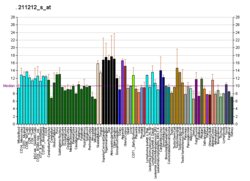| ORC5 | |||||||||||||||||||||||||||||||||||||||||||||||||||
|---|---|---|---|---|---|---|---|---|---|---|---|---|---|---|---|---|---|---|---|---|---|---|---|---|---|---|---|---|---|---|---|---|---|---|---|---|---|---|---|---|---|---|---|---|---|---|---|---|---|---|---|
| Identifiers | |||||||||||||||||||||||||||||||||||||||||||||||||||
| Aliases | ORC5 , ORC5L, ORC5P, ORC5T, PPP1R117, origin recognition complex subunit 5 | ||||||||||||||||||||||||||||||||||||||||||||||||||
| External IDs | OMIM: 602331; MGI: 1347044; HomoloGene: 37636; GeneCards: ORC5; OMA:ORC5 - orthologs | ||||||||||||||||||||||||||||||||||||||||||||||||||
| |||||||||||||||||||||||||||||||||||||||||||||||||||
| |||||||||||||||||||||||||||||||||||||||||||||||||||
| |||||||||||||||||||||||||||||||||||||||||||||||||||
| |||||||||||||||||||||||||||||||||||||||||||||||||||
| |||||||||||||||||||||||||||||||||||||||||||||||||||
| Wikidata | |||||||||||||||||||||||||||||||||||||||||||||||||||
| |||||||||||||||||||||||||||||||||||||||||||||||||||
Origin recognition complex subunit 5 is a protein that in humans is encoded by the ORC5 (ORC5L) gene. [5] [6] [7]





